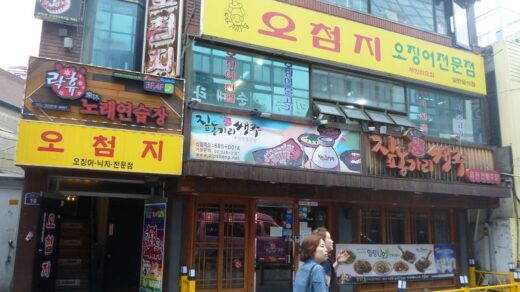This tip is about three Korean punctuation marks you won’t see in our translations. (For past tips on other Korean punctuation, see #3, #14, #19, #33.)
1. Half-brackets: 「 」 (Hexadecimal codes: 300C and 300D)
Korean doesn’t have capital letters (see tip #24), and so Korean writers use other techniques to set certain phrases off from the surrounding text. In the example below, the names of a law and government initiative are half-bracketed for clarity. In some cases, such as the names of books, these Korean half brackets function like italics or underlining in English (neither of which are used a lot in native Korean writing).
Here’s what it looks like in context::

2. Greater-than/less-than signs: < >
Koreans sometimes use these in place of parenthesis or square brackets. The rules aren’t set in stone but pointed brackets around the names of tables, graphs, and other figures are common.
Here’s what it looks like:

3. Floating dot: ㆍ (Hexadecimal code: 318D)
The dot essentially means “and” and is usually added in situations where we would use a comma or forward slash in English to separate items in a short list.
And here’s what this one looks like:

So, why don’t we use these in our translations from English to Korean?
Good question!
The short answer is that these symbols are common in native Korean writing, but they are not used much in translated Korean. Korean writing conventions make some stylistic adjustments to translated text, which makes translated Korean distinct from original Korean composition.
Needless to say, when translating a Korean document to English, I also never use these punctuation marks. Instead, I substitute English punctuation.
Korean Translation Tip – Native Korean writing uses some punctuation that does not find its way into translated Korean or English. If you see these characters in a Korean file, just be sure other punctuation or capitalization is used instead. But don’t insist on one-for-one transfer.
BTW, the examples above are from my first article published in Korea as one of the requirements of my ongoing (and almost complete) Ph.D. studies at Hanyang University.



